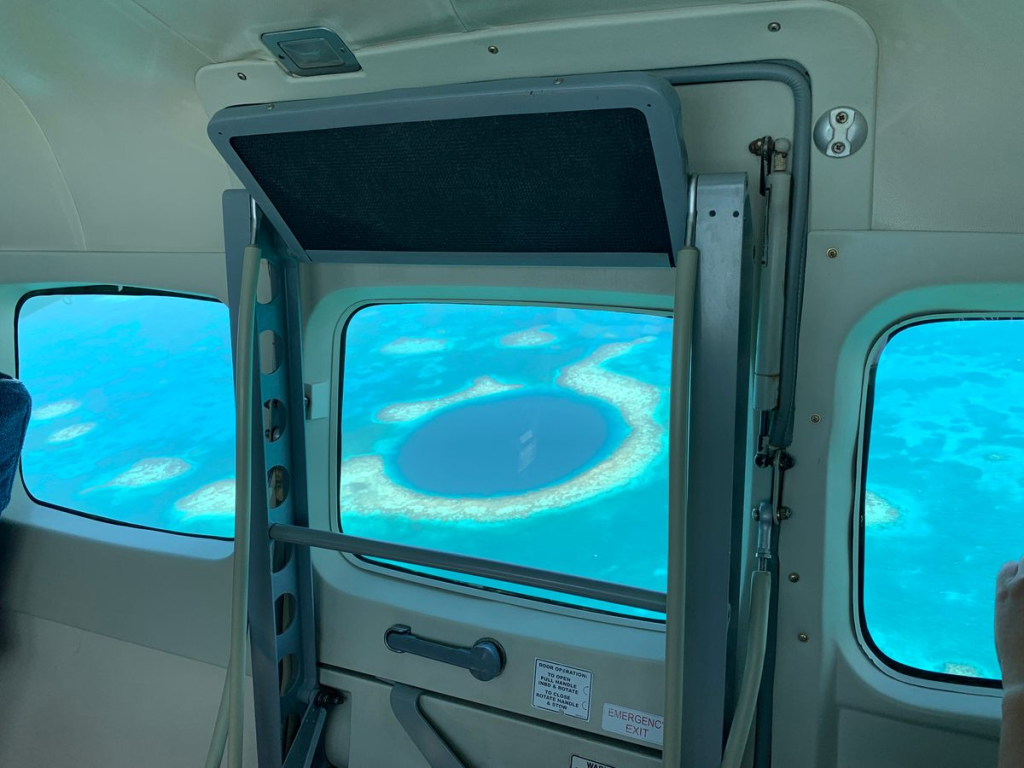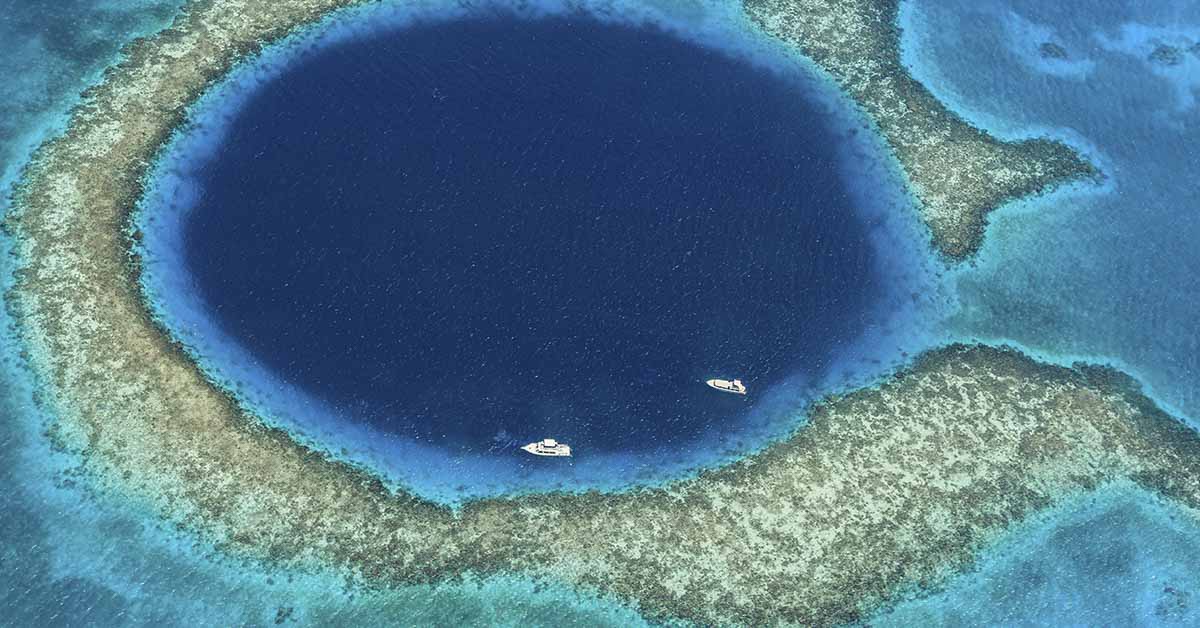The Great Blue Hole, located just 160 miles from the shores of Belize, is an underwater sinkhole that experts believe to be the largest of its kind. This circular wonder boasts a stunning, deep blue hue. It measures over 984 feet in diameter and 410 feet in depth. Beautiful in its natural glory, the Great Blue Hole holds a dark past.
It sits at the heart of Lighthouse Reef, an atoll surrounded by a coral island that encircles a lagoon of shallow, turquoise-colored waters. In fact, the water levels here are so shallow that certain parts of the coral ring even crest the surface during low tide. Further adding to the allure of this natural marvel.

A limestone cave in the past, the Great Blue Hole flooded over time
The Great Blue Hole originated as a limestone cave during the last glacial period when sea levels were much lower. As the ocean gradually rose, the cave system flooded and ultimately collapsed, leaving behind a vertical cave in the ocean. Today, divers flock to the site to marvel at the geological formations that lie in the ocean’s depths.
Divers made a rather shocking discovery
Exploration of the Great Blue Hole was limited for a considerable period as divers lacked the equipment required to navigate its depths. However, with advancements in technology and the piqued interest of billionaire Richard Branson, this began to change.
Branson led an expedition to the sinkhole, inviting diver Fabien Cousteau to capture high-quality photos and videos of the secrets concealed beneath the surface. Regrettably, what they found at the bottom of this captivating and enigmatic underwater feature reflects humanity as we know it.
Read: There’s a circular island that floats and rotates but nobody’s exactly sure how
At the bottom of the Great Blue Hole, the team stumbled upon a disheartening sight – litter. A 0.5-gallon plastic bottle and a forgotten GoPro containing vacation photos were among the items discovered. However, this was not the only unsettling discovery.
The team also uncovered the remains of two divers who had gone missing in the cavern. Although the sight would undoubtedly have been distressing, the team ultimately decided to leave the bodies where they lay. They deemed the Great Blue Hole to be a fitting and respectful final resting place.

Their discovery of the Great Blue hole didn’t stop there
The team’s shocking discoveries did not cease with the somber sighting of litter and lost lives. Upon diving to the hole’s depths in a submersible vehicle, they encountered a vast series of caves hosting hanging stalactites. This revelation contradicted scientific understanding, which held that stalactites could not form underwater.
The finding suggested that these caves, situated hundreds of feet below the ocean’s surface, had once existed on dry land. In a post on Virgin.com, Branson emphasized the disturbing implications of this discovery for the state of our planet, stating: “The Great Blue Hole is comprised of a complex network of caves that once existed on dry land. It serves as evidence of how rapidly and catastrophically sea levels can rise.”
“Sea levels were once hundreds of feet lower. 10,000 years ago the sea level rose by about 300 feet when a lot of ice melted around the world. At 300 feet down you could see the change in the rock where it used to be land and turned into sea.” Branson explained, describing the scene as ‘one of the starkest reminders of the danger of climate change he’s ever seen’.
When can one optimally dive in the area?
While diving is possible year-round, the period between April and June is considered optimal for better visibility and the chance to spot whale sharks in the area. Undersea explorer Jacques Cousteau was one of the many divers who explored the site. In 1971, while sailing on his ship Calypso, he declared the Great Blue Hole to be one of the top ten best diving spots in the world.
During his investigation of the sinkhole’s depths, Cousteau confirmed its origins as a limestone cave formation. He also discovered enormous stalactites and stalagmites beneath the surface, some of which measured up to 30-40 feet in length.

According to legend, the name of the Great Blue Hole was coined by British diver and author Ned Middleton. He named it after Australia’s Great Barrier Reef. Today, divers can still admire the stunning geological formations within the sinkhole. As they descend deeper into the water, the visibility improves, and the formations become more intricate.
Keep Reading: Scientists alarmed by discovery after sending robot under the ‘Doomsday Glacier’
Sources
- “Divers make disturbing discovery after finally reaching bottom of Great Blue Hole.” Lad Bible. Emily Brown. March 20, 2023
- “Great Blue Hole.” Atlas Obscura.

